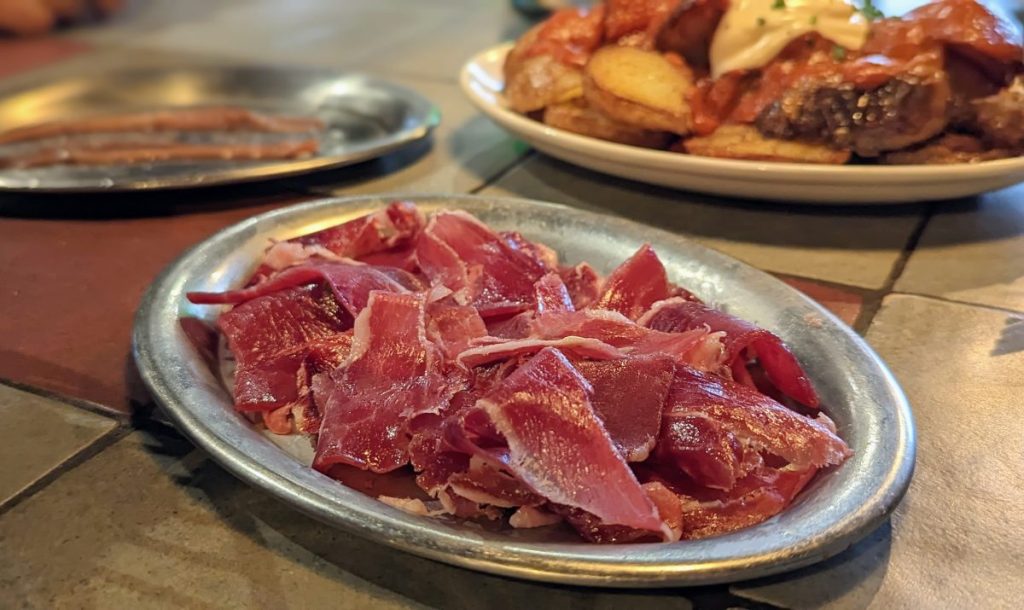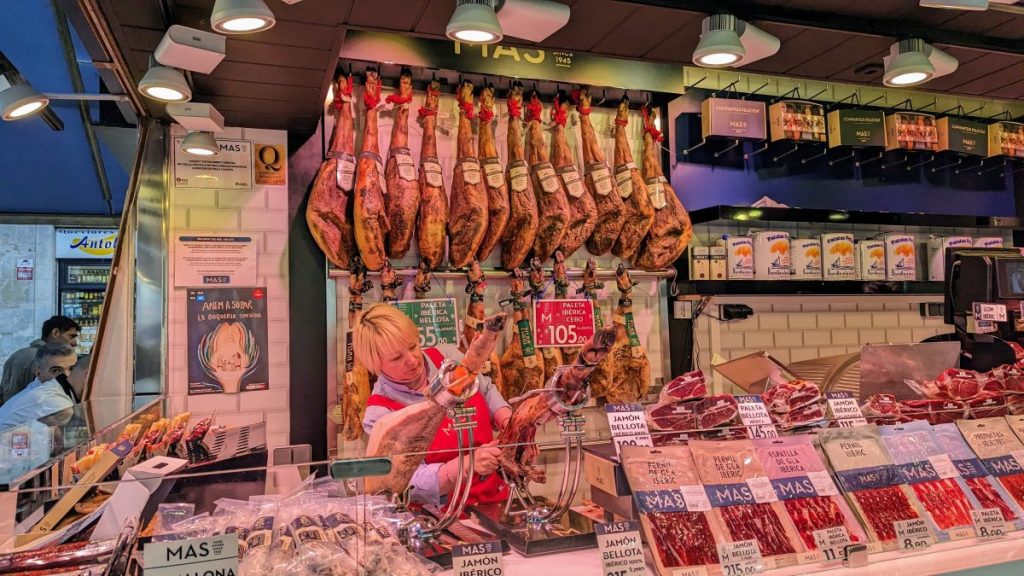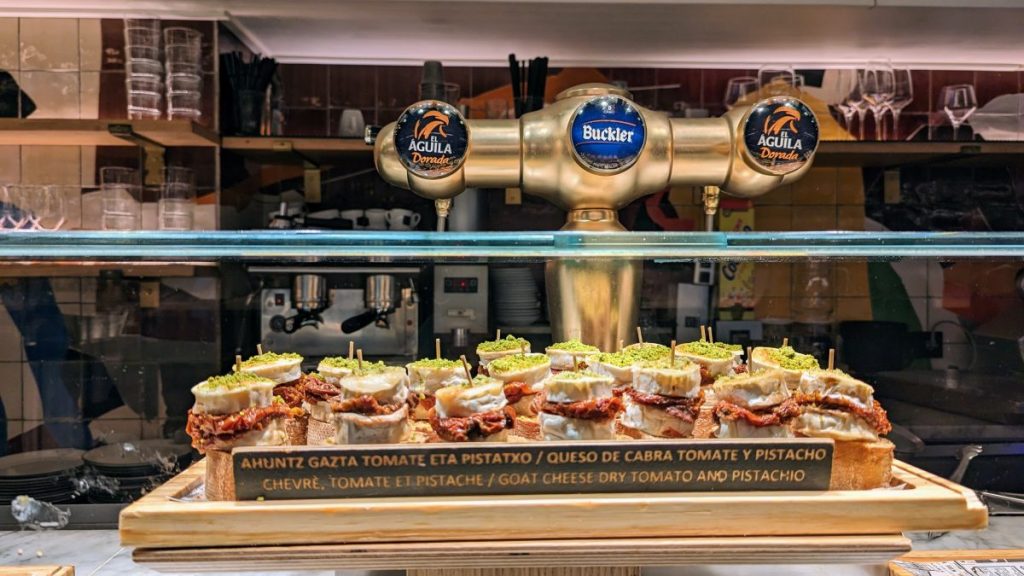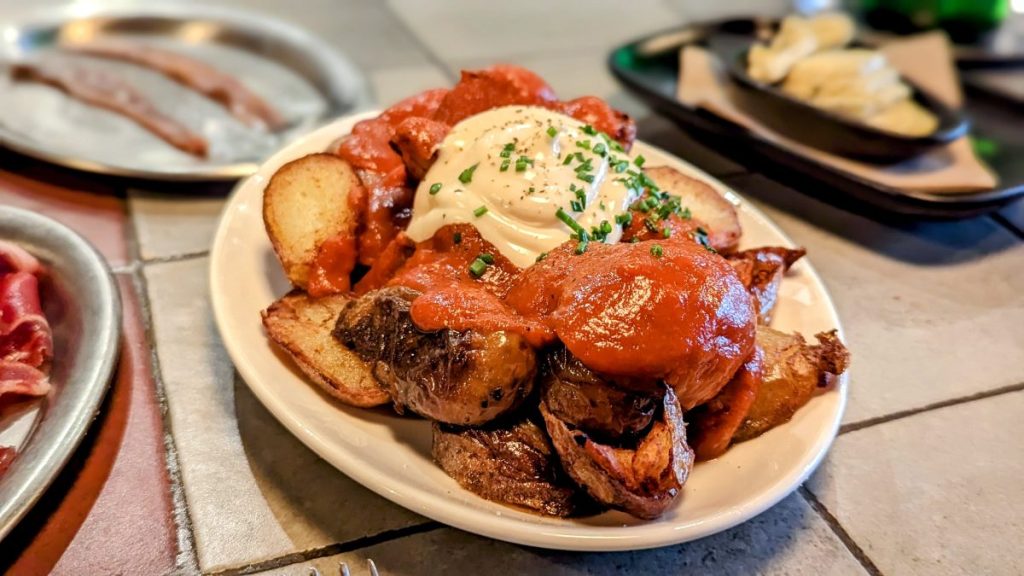Tapas. Pinxtos. Or less formally, little bites of Spanish goodness. There are plenty of reasons to go to Spain; tapas just happen to be the tastiest. In northern Spain, typical tapas styles and the dishes that represent them can vary widely, as can the protocol for ordering and eating them in different regions. With easy access to the cool Atlantic, the warmer Mediterranean, and rolling hills of farmland and wineries in between, the food in Northern Spain has one thing in common: Fantastic ingredients and delicious preparation. Tapas and Pinxtos are the perfect way to eat your way through these delicacies. Here’s a primer on enjoying these small bites in three northern cities.

Barcelona
Barcelona’s tapas scene caters heavily to tourists. If this is your first time experiencing the tasty bites, it’s a low-stress, low-pressure way to ease yourself in. But this doesn’t mean that the tapas aren’t as good. You’ll still find plenty of excellent tapas options in the city.
After a morning of browsing La Boqueria, stop for a bite at Pinoxto, a market institution where bow-tie wearing Juanito scurries behind the bar, preparing dishes like grilled lobster, meat-filled croquettes, hearty beef stew, and delicate snails.

Taller de Tapas, a chain with four locations in Barcelona, offers authentic Spanish tapas to locals and tourists; while the wait staff speaks excellent English, you’ll still hear the sounds of Spanish conversation swirling all around you. Dishes like sautéed spinach with garbanzo beans and pancetta, Spanish tortilla with onion, grilled chorizo in cider, and steamed mussels dominate the menu.
Though each dish is on display along the bar, everything is freshly made-to-order, served at the table, and tallied on an electronic bill at the end of the meal. As for the drinks, while many places in Barcelona offer a full bar, you can’t go wrong with cheap, bubbly cava, the locally-made Spanish sparkling wine.
San Sebastian
Home to three 3-Michelin-star restaurants, San Sebastian is Spain’s temple of haute cuisine. The locals here like to say that while tapas were created in Madrid, they were perfected here. They’re called pinxtos (pronounced “pinchos”) in the Basque language and are a far cry from the simple, traditional fare offered in Logroño.

Most of San Sebastian’s pinxtos bars are located in the Parte Viejo (old town) near the harbor. Calle 31 de Agosto, which runs between two medieval churches, is where you’ll find some of the best. Here, dishes like poached quail egg on crostini, steamed lobster tail in saffron sauce, and grilled octopus are staples.
La Cuchara de San Telmo is a particular favorite of both locals and visitors. The chef trained with gastro-mastermind Ferran Adria of El Bulli, and prepares made-to-order small plates like seared foie gras on onion confit with sea salt, and a creamy wild mushroom risotto.
Ordering pinxtos in San Sebastian is easy. Cold dishes are speared with toothpicks and displayed on the bar. Watch to see if other patrons simply grab what they want or if they ask for a “plato” and follow suit, loading up your plate with your selections. For hot dishes, indicate what you want from the bar (and it’ll be heated up) or from a chalkboard menu (and it’ll be made to order).
When it comes to the perfect San Sebastian drink to accompany the pinxtos, give sidra, a locally made tart, alcoholic apple cider, a try. At the end of your meal, tell your bartender what you had, or just tally up your toothpicks and settle the bill.

Logroño
The capital of the Rioja region, the area of north central Spain famous for its wine production, Logroño is a working-class town that knows how to party. On weekdays, it seems the whole town is out en masse, having some pre-dinner tapas and a few drinks. But on weekend nights, the population swells as residents from surrounding towns join in and Calle Laurel, a narrow, cobbled alley in the pedestrian-only old town, fills with people dining and drinking in the streets.
Calle Laurel is home to the highest concentration of bars in Spain – there are over 40 bars within just a few blocks. And while luxury hotels and celebrity-chef restaurants have sprung up around Rioja as wine tourism has grown, Logroño has stayed true to its roots. The tapas here are simple, but by no means are they boring.

Most bars serve a similar menu, but each bar seems to have one specialty that they make better than anyone else, and this is what people come for. Groups have it down to a science – calamari here, patatas bravas there, grilled shrimp with pineapple at one place, jamon and manchengo sandwiches at another – and always head to the same bars in the same sequence.
The protocol at these tapas bars is simple. Belly up to the bar, check out the offerings displayed in the glass case, and make your selections. If your Spanish isn’t the best, simply pointing and saying “uno” or “dos” will suffice.
When it comes to your drink selection, it’s a no-brainer: Rioja of course. The cheapest variety will be Crianza, a young wine. The aged Reservas and Grand Reservas increase in price. You’ll generally pay per round here. Brush up on your numbers in Spanish, or just toss down a ten euro bill each time, which will cover one dish and two drinks with plenty of change.
Written by Katie Hammel for EuropeUpClose.com

jessiev
Wednesday 9th of September 2009
can you say YUM!?! thanks so much!